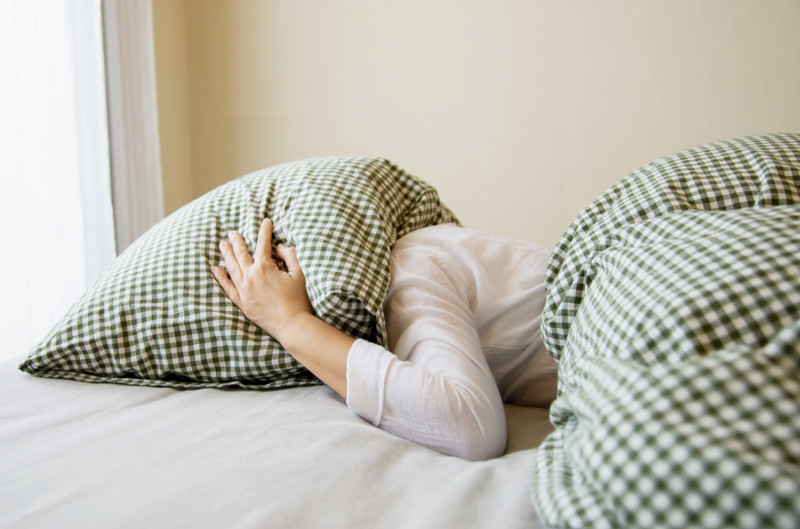
With such busy lives, having a consistent bedtime routine is often something put on the back burner for many adults. However, creating and sticking to a bedtime routine is one of the best things you can do for your long-term health and wellness.
After a long day, having a way to signal to your body that it’s time to relax and unwind is important so you can get the best sleep possible. Seeing as insomnia is one of the most common sleep disorders, it’s clear that many people struggle to fall asleep after a busy day.
Much of this can be attributed to not having a consistent routine. If your body doesn’t know that it is time to fall asleep, you may end up staying up much longer than intended, leading to you feeling tired or groggy the next morning.
There is no one-size-fits-all solution for a bedtime routine—the best routine is the one that works for you. Below, we outlined five bedtime routines for adults to help you relax and get ready for a good night’s sleep.
- Set a bedtime alarm
Setting an alarm to tell you when to start getting ready for bed is a great way to get your body to naturally adjust to a consistent time to fall asleep and wake up. If you are falling asleep at the same time each night, your body will start to naturally wake up around 7-9 hours later, leading to a reduced feeling of grogginess and dread in the morning.
By setting an alarm to tell you when to get ready for bed rather than actually going to bed, you give yourself more flexibility with your bedtime routine. Want to take a few extra minutes to do a face mask, or meditate? Try to build in some self-care time to your bedtime routine each night so you can get yourself in the right headspace for a good night’s sleep.
- Dim your lights and lower your thermostat
Your circadian rhythm is your body’s natural way of deciding when to fall asleep and wake up, and dimming your lights and lowering your thermostat is a great way to signal to your body that it’s time for bed.
Setting your thermostat to 65 degrees is an ideal sleeping temperature. Try doing this, then dimming your lights and minimizing your exposure to blue light to signal to your brain that it’s almost time to power off. Putting yourself in the right environment is crucial to get the best sleep possible, so also important to have a top-quality mattress that makes falling asleep a breeze.
- Relax your muscles with therapeutic exercise
Doing relaxing yoga for sleep is one of the best ways to release tense muscles and get in the right headspace for a peaceful night’s rest. Try starting with a relaxing cat-cow flow (Marjaryasana and Bitilasana) and move into more restful positions such as the corpse pose (Savasana) to loosen your muscles and feel at peace.
Foam rolling is another great option to relax your muscles before going to bed. Foam rolling can help reduce muscle soreness or stiffness and is a great option regardless of if you work in an office or doing manual labor. Think of foam rolling like a massage for yourself, helping to relax muscles you didn’t even know were tense and get your body into a state of relaxation and restfulness.
- Eat a light dinner
We’ve all heard eating a big breakfast, moderate lunch, and small dinner helps control our weight, but did you know following this eating pattern can also help improve your quality of sleep as well? Try having an eating window of around 10 hours a day to keep your metabolism functioning well and improve your sleep quality.
If you need a late-night snack, try opting for healthy food options like nuts, yogurt, or oatmeal to fill you up and boost melatonin levels before hitting the hay.
- Go screen-free before bed
In a world where technology is integrated into almost everything we do, it can be hard to take some time away from our screens. However, the blue light that these screens emit is one of the biggest culprits that keep us awake, since it signals to our internal clock that we should be feeling alert.
Try turning off your phone or laptop at the beginning of your nighttime routine, and see if it helps improve your quality of sleep. A great alternative is to opt for a calm and relaxing music playlist to listen to during your bedtime routine. Whether you prefer classical, jazz, or r&b, having a bedtime playlist is a great way to get your mind ready to catch some zzz’s.
An ideal bedtime routine should last anywhere from 30 to 60 minutes. Although this can seem long to some people, it’s important to be consistent and realistic with a routine you can stick to long-term, so you can train your body for sleep and feel rested and refreshed the next morning. For a complete guide to bedtime routines to improve your quality of sleep, check out the infographic below.


